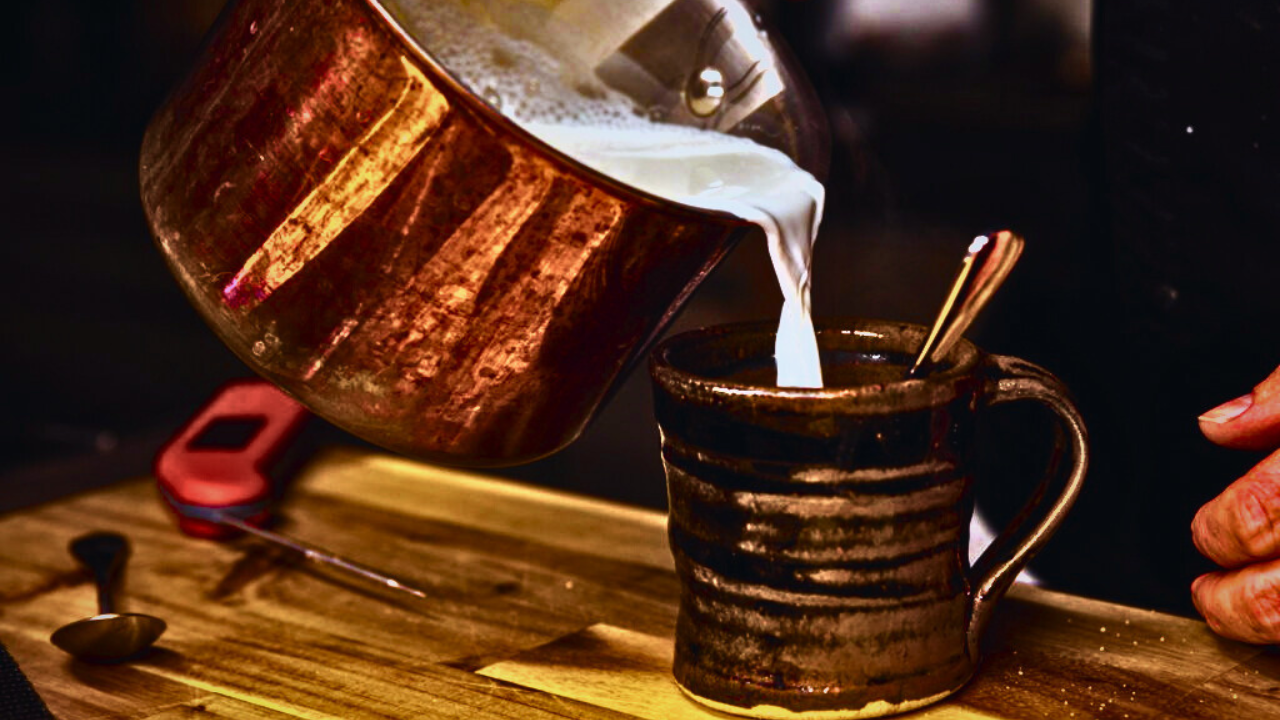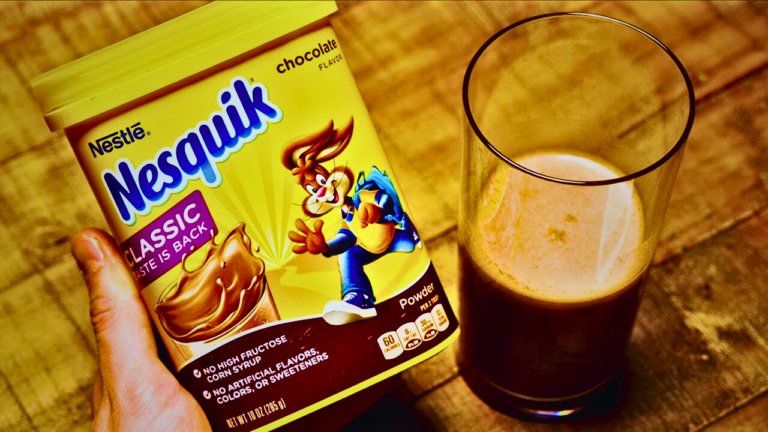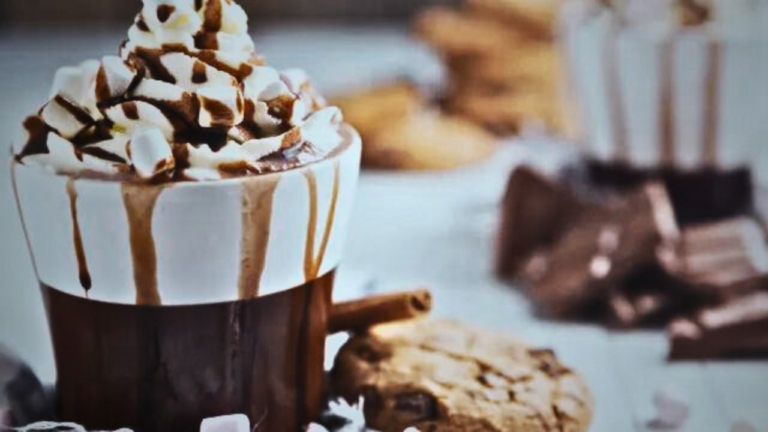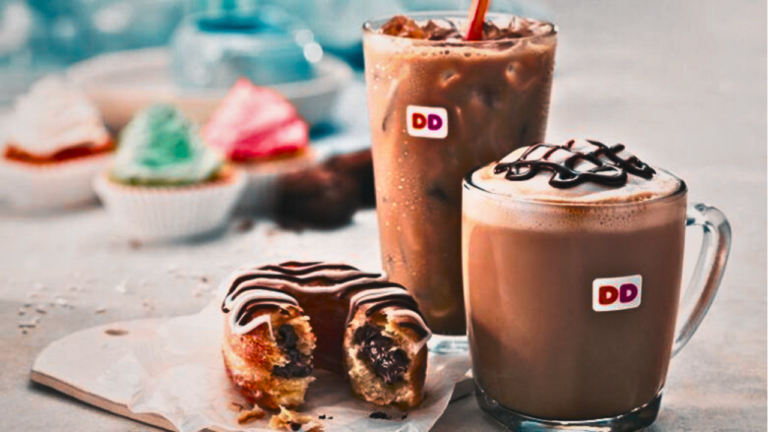What Temp Should Hot Chocolate Be?
There’s no denying the allure of a warm, creamy cup of hot chocolate. Its silky smoothness, rich chocolate flavor, and comforting warmth can turn any chilly day into a cozy one. But with great indulgence comes a question you might have overlooked: what temperature should hot chocolate be?
The answer can vary depending on personal preferences and safety, of course. However, there’s certainly a sweet spot (pun intended) where the temperature of your hot chocolate links delight with each sip and reduces the chances of burning your tongue. We’ll guide you to the perfect temperature in this article.
Discover the optimal temperature for your hot chocolate. A blend of safety and perfection.
To understand what temperature is best for hot chocolate, let’s focus on two main factors:
- The ideal serving temperature is the range that maximizes flavor without risking a burnt tongue.
- Safety considerations: understanding how hot is too hot for the human palate.
By understanding these factors, you can ensure that your hot chocolate is not just delicious but also served in a way that adds to the experience rather than detracting from it.
Read also: Is Nestle Hot Chocolate Caffeine Free?
What is the ideal serving temperature for hot chocolate?
Warm, soothing, and sumptuously sweet, hot chocolate is indeed a crowd favorite for all the right reasons. When simmering your hot chocolate on the stove, you should aim to strike a perfect balance with the serving temperature—something that can provide a warming sensation without scalding your tongue.
You might wonder, What’s that magic number? According to experts, the ideal temperature to serve hot chocolate is around 160 to 185 degrees Fahrenheit (71 to 85 degrees Celsius). This is hot enough to release the rich chocolate flavors and create that pleasantly warm feeling as you sip, but not so hot that it burns your mouth.
Serving your hot chocolate at this temperature range lets the delightful chocolate aroma waft upward and activate your sense of smell, enhancing your overall tasting experience. Remember, hot chocolate isn’t just about taste—it’s also about aroma. So, serving it at the right temperature can indeed elevate its flavor profile.
Note: Always be careful when heating your hot chocolate, as it can swiftly go from being pleasantly warm to dangerously hot. Let it cool down a bit after heating, especially if you’re serving it to kids who may not accurately judge the temperature.
What are the different recommended temperatures for hot chocolate based on personal preference?
Hot chocolate is a versatile and comforting drink enjoyed by many, offering a range of possible temperatures based on personal preference. Think of it as a chic adventure, a culinary journey that can swaddle your taste buds in a warm, cocoa-inspired embrace. The ideal temperature can differ since factors like personal taste, tolerance to heat, and even time of consumption come into play. With that in mind, let’s explore some variations:
- Steaming Hot (160–185°F): This temperature gives a rather intense experience, with hot chocolate that’s almost at the boiling point. It’s perfect for those who cherish steamy sips that warm the body from the inside out. Take a moment’s pause between sips to avoid burning your mouth.
- Hot, Not Scalding (130–159°F): This range is for those who prefer their hot chocolate to be noticeably hot but not too close to the boiling point. This is the optimal range for releasing the complex flavors of the chocolate without causing discomfort.
- Warm (110–129°F): In this range, hot chocolate is warm enough to enjoy its distinct creamy texture and rich flavors, but cool enough to not burn your tongue. It’s a common range for hot chocolate drank relatively quickly.
- Lukewarm (85–109°F): This might be the chosen range for the heat-sensitive people among us or for those who sip their drink slowly over a long chat. It’s hot enough to dissolve the chocolate and mix it well with the milk, but without the risk of discomfort from too much heat.
So, whether you prefer it piping hot, pleasantly hot, nicely warm, or lukewarm, there’s a temperature out there to cater for all taste buds. Remember, these are just recommendations. The best temperature is, without a doubt, the one that appeals to you the most.
What factors can affect the temperature of hot chocolate, such as the type of milk used or the addition of whipped cream or marshmallows?
Imagine that you’re curling up on a cool evening with a delicious cup of hot chocolate. You might not have considered this before, but several factors can really affect the temperature of your hot chocolate. It’s not just as simple as tossing a sachet into boiling water and calling it a day—there’s some science here, and a little understanding goes a long way in creating the perfect mug of this much-loved beverage.
Type of milk: Firstly, let’s talk about the type of milk used. Most people use regular cow’s milk, but it’s becoming more common to find varieties made with almond, soy, or oat milk. These plant-based milks have different boiling points compared to cow’s milk, which typically boils at around 180°F (82°C). Almond milk, for instance, can start to boil at a lower temperature. So, if you’re using plant-based milk, you might want to heat your chocolate at a lower temperature to prevent it from burning.
Additions: What you add to your hot chocolate can also make a difference. Do you like to heap a big spoonful of whipped cream on top, or perhaps add some fluffy marshmallows? Both of these tend to cool down your beverage quite a bit. So, if you like your hot chocolate hotter, it might be worth heating it a little more than usual when you know you’re going to add these toppings. However, if you’re the kind who enjoys a cooler hot chocolate, these are perfect additions.
Beyond that, do you add your hot chocolate mix to the milk, or do you add the milk to the hot chocolate mix? Did you know this could also affect the temperature? It’s generally recommended to add the hot chocolate mix to the boiling water or milk, which can help ensure a proper dissolve and achieve the desired temperature.
Storage: Lastly, the temperature at which you store your hot chocolate before drinking it can impact how hot it stays. A standard ceramic mug will allow your hot chocolate to cool significantly faster than an insulated travel mug. So, if you like to take your time when drinking hot chocolate, an insulated mug might help maintain the temperature for longer.
In summary, the type of milk you use, what you add to your hot chocolate, and how you store it can all influence the temperature. With these considerations, you can have perfect control over your hot chocolate temperature—everything from scalding hot to lukewarm to cool and everything in between. But remember, no matter the temperature, a cup of hot chocolate is always comforting in its own sweet, chocolaty way!
Read also: Is Mcdonalds Hot Chocolate Caffeine Free?
Are there any cultural or regional variations in the preferred temperature for hot chocolate?
Ah, the fascinating subject of cultural and regional variations in hot chocolate consumption; it’s quite as diverse as the drink itself. While we generally enjoy our hot chocolate at a cozy and warm temperature, this isn’t the universal standard. In different parts of the world, hot chocolate can be served at a variety of temperatures, all dependent on local customs, ingredients used, and the weather.
Let’s embark on a global hot chocolate journey:
- Spain: Ever heard of Spanish ‘Chocolate Caliente’? Thick and indulgent, this version is usually served quite hot, typically between 150 and 160°F. It’s usually consumed with crispy churros and makes for an incredible comfort food during Spain’s winter months.
- Mexico: Hailing back to Aztec times, Mexican hot chocolate, or ‘Chocolate Caliente’, is traditionally served at a slightly warmer temperature than other varieties, typically above 160° Fahrenheit, offering a heat that beautifully complements the rich, often spiced, chocolate flavors.
- France: Known for their Chocolat Chaud, the French prefer their hot chocolate a tad cooler but still warm, around 130–140°F, allowing the high-quality chocolate to shine without scorching it.
- Switzerland: In this country, known for its chocolate, the temperature of hot chocolate is often lower, around 120–130° Fahrenheit. This makes the beverage more immediately drinkable, a feature appreciated in a cold alpine setting!
It’s critical to note that these are general guidelines. Individual preferences and methods can vary widely, even within these cultures. So when making hot chocolate, keep in mind that the key is to find a temperature that brings out the best in your particular chocolate, maximizes flavor, and suits your personal comfort level.
Conclusion
In conclusion, finding the ideal temperature for serving hot chocolate can be quite subjective and depends largely on an individual’s personal preference. While the universally recommended temperature tends to range from 160–185 degrees Fahrenheit (70–85 degrees Celsius), personal tastes can and often do skew hotter or cooler.
You’ll find that the type of milk you use may affect this to a degree, with creamier milks such as whole and half-and-half often requiring slightly lower temperatures due to their high-fat content. Similarly, some may prefer a cooler serving if whipped cream or marshmallows are added, as the toppings themselves cool the drink while they melt and infuse their sweetness.
From a cultural and regional perspective, there’s also a significant variation. Some cultures enjoy their hot chocolate more lukewarm, while others may prefer theirs hot enough to rival a steaming cup of black coffee! It’s a fascinating subject to delve into and a delicious one to experiment with.
Remember, the key here is to suit your palate. After all, the goal of indulging in a cup of this heavenly concoction is to enjoy every sip and let it warm you from the inside out. So, choose your preferred temperature, whip up a batch, and savor the chocolatey goodness!
Read also: Is Tim Hortons Hot Chocolate Caffeine Free?
FAQs
How can I measure the temperature of my hot chocolate?
You can use a kitchen thermometer to measure the temperature of your hot chocolate. Simply place it in the liquid and wait for the reading to stabilize.
Can I reheat my hot chocolate if it gets too cool?
Absolutely, you can reheat your hot chocolate if it gets cool. Just be sure not to bring it to a boil, or you risk scorching it and altering the flavor.
Is hot chocolate safe for kids?
Yes, hot chocolate is safe for children. However, be aware that it must be cool enough to not burn their sensitive tongues. A common recommendation is to serve at around 104°F (40°C).
Does hot chocolate go bad?
Like any food item, hot chocolate can indeed go bad. It’s best to consume it while hot, and if you have to store it, be sure to refrigerate and consume within 1-2 days.
What’s the best way to cool hot chocolate quickly if it’s too hot?
If your hot chocolate’s too hot, the fastest way to cool it is by adding a bit of cold milk. Or you can simply wait for it to naturally cool down. Be careful not to add too much so you do not dilute the flavor.
Does adding marshmallows or whipped cream alter the temperature significantly?
While these additions can cool the drink down slightly, the change isn’t significant, and most people enjoy the creaminess and flavor they bring to hot cocoa.
Does the type of chocolate used affect the serving temperature?
Yes, the melting point of different chocolate types varies. Dark chocolate tends to have a higher melting point than milk chocolate, meaning your hot chocolate might need to be slightly hotter if you’re using dark chocolate.
Will heating the milk and chocolate separately affect the final serving temperature?
It might. Heating the components separately might require you to heat them to a higher initial temperature, as they will cool once they are combined. The final ideal temperature should still be the same.
What should be the temperature if I use soy milk or almond milk instead of regular milk?
While the ideal temperature may vary slightly based on each person’s individual taste, 140°F to 160°F (60°C to 71°C) is generally a good range for hot drinks, irrespective of the type of milk used.
Can I still enjoy my hot chocolate if it’s not at the recommended temperature?
Indeed, you can! While there are optimal temperatures for taste and texture, hot chocolate is a personal delight. What matters most is that you enjoy it, regardless of the temperature.

Welcome to the delightful world of “Hot Chocolate Brew,” where the art of crafting and savoring hot chocolate takes center stage. I am Smith Karen, your guide on this indulgent journey through the rich and velvety universe of hot chocolate. As a passionate enthusiast of this comforting elixir, I am thrilled to share my insights, recipes, and experiences with fellow connoisseurs and those eager to explore the diverse realm of hot chocolate.
At “Hot Chocolate Brew,” we believe that a steaming cup of cocoa has the power to warm not just your body but also your soul. Whether you’re a seasoned hot chocolate aficionado or a newcomer to the world of cocoa delights, our aim is to provide you with a delectable blend of inspiration, knowledge, and mouthwatering recipes.
Join me in uncovering the secrets behind the perfect cup of hot chocolate, from selecting the finest ingredients to experimenting with unique flavor combinations. From classic recipes that evoke nostalgic warmth to innovative twists that will surprise your taste buds, “Hot Chocolate Brew” is your go-to resource for all things cocoa-related.
Prepare to embark on a journey of indulgence, as we explore the nuances of this timeless beverage together. Get ready to elevate your hot chocolate experience and make every sip a moment of pure, chocolaty bliss. Cheers to the joyous world of “Hot Chocolate Brew”!







